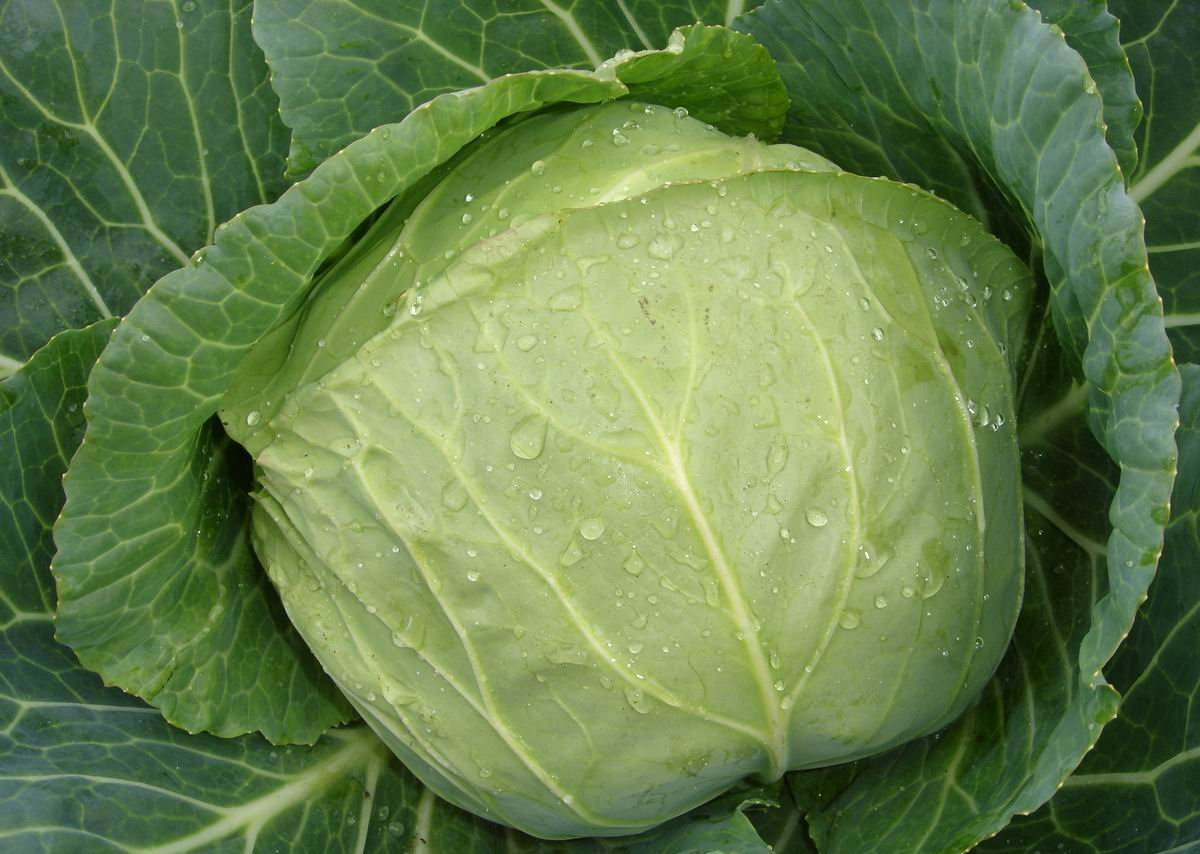 Cabbage is an unpretentious vegetable crop that produces seeds in the second year of life. To do without buying seed, just leave a couple of forks of your choice. Receive quality seeds it is possible at home, if you adhere to the rules of agricultural technology and know how to store the mother plant in winter. Compliance with all the recommendations of experienced gardeners allows you to get a good harvest of pods.
Cabbage is an unpretentious vegetable crop that produces seeds in the second year of life. To do without buying seed, just leave a couple of forks of your choice. Receive quality seeds it is possible at home, if you adhere to the rules of agricultural technology and know how to store the mother plant in winter. Compliance with all the recommendations of experienced gardeners allows you to get a good harvest of pods.
Content
Culture features
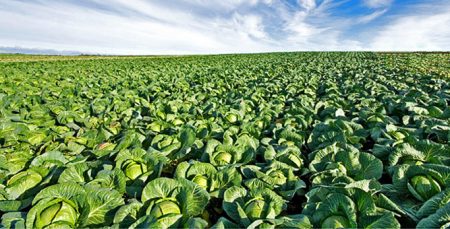
Garden cabbage is an agricultural crop of the Cruciferous family. It is grown in open ground as an annual plant. In the first year, food organs are formed on cabbage, and in the next year, seeds. The head of cabbage belongs to the edible part of the plant. It can be round, conical or flat. "Heads" appear as a result of growth of leaves from the apical kidney.
The stalks of the cabbage are erect, low. The leaves are whole, large, sessile or petioles. They can be light or dark green in color, and some varieties are characterized by a purple hue. On the upper leaves there is a wax coating. Peduncles reach a length of 1.5 m. Yellow or white buds are collected in a brush. After 14-30 days, fruits are formed from them - double-nested pods containing rounded seeds of dark brown color.
Cabbage is very moisture-resistant and cold-resistant. Her seeds sprout even at a temperature of + 2 ... + 3 ° С, but + 17 ... + 20 ° С are considered optimal indicators. Shoots and young plants withstand frosts to -2 ° C, and adult specimens - up to -5 ° C. For normal development, cabbage needs a temperature not lower than + 12 ° С and not higher than + 30 ° С. In the heat, moisture evaporates more intensively, and without timely watering, the leaves become stiff. During the formation of heads of cabbage, the need for water increases. However, excess moisture is also harmful to the plant, provoking the death of the roots.
The place is chosen bright, because cabbage grows poorly in the shade. With a long daylight, cruciferous plants develop more actively, and with a short day, growth processes are delayed, peduncles and head of cabbage grow small. The best predecessors are early potatoes, zucchini, onions, cucumbers, green manure, carrots and peas. It is recommended to plant a vegetable on medium loamy soil containing at least 3-4% organic matter. The pH should be between 6.5-7, as on acidic soil, cabbage is often affected by keel. The causative agent of the disease is a parasite fungus that damages the roots of plants.
How to get cabbage seeds
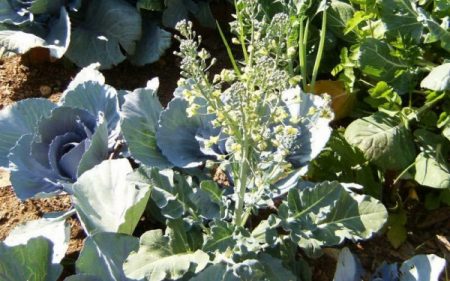 At the end of the season, ripened heads of cabbage are selected as mother liquors. When growing them, observe the following rules:
At the end of the season, ripened heads of cabbage are selected as mother liquors. When growing them, observe the following rules:
- Early varieties of cabbage sown on seedlings a little later than usual: from mid-May or in the first days of summer. Late and mid-early varieties need to be sown early so that the cabbage heads have time to ripen before autumn frosts.
- No need to overfeed the cabbage grown on seeds with nitrogen-containing fertilizers. Otherwise, the queen cells will be affected by rot during winter storage. The soil is fertilized with a mineral mixture: 30 g of ammonium nitrate, 50 g of potassium salt and superphosphate per 1 m2.
Selection of mother liquors
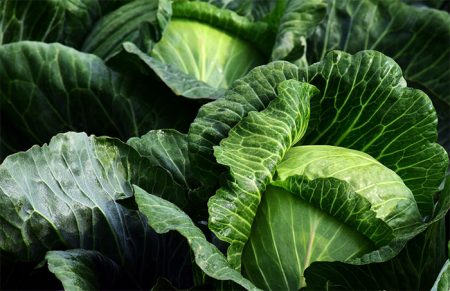 To get good cabbage seeds, you need to correctly select the mother liquors:
To get good cabbage seeds, you need to correctly select the mother liquors:
- Strong, healthy, undamaged heads of cabbage will do. Their characteristics and ripening dates must correspond to the characteristics of the variety.
- Cabbage of late and mid-ripening varieties is better stored than early cabbage.
- Good mother liquors have large forks, a relatively small mass of outer leaves, and a shortened and thin stump.
- Heads of cabbage need to be dug up before autumn frosts. If the cabbage is not cleaned on time, then before being placed in the store she needs to be allowed to "recover" for 7-10 days.
- The mother liquors are carefully removed from the ground along with the roots, being careful not to damage the stump. Earth does not need to be shaken.
Features of storage of the mother plant
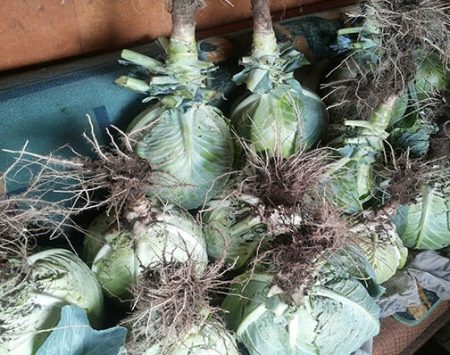 In order for the mother liquors to develop normally in the next season and give high-quality seeds, it is necessary to provide them with the correct storage conditions:
In order for the mother liquors to develop normally in the next season and give high-quality seeds, it is necessary to provide them with the correct storage conditions:
- Before laying in the cellar, most of the upper leaves are cut from cabbage, leaving only 2-3 that are firmly adjacent to the head of cabbage.
- For warning fungal diseases dug plants sprinkled with crushed chalk or sifted wood ash.
- The mother liquors are well stored in a dark room at a temperature of + 1 ° ... + 2 ° C. On heads of cabbage that were warm in winter, instead of good peduncles, a dense leaf mass is formed. If the cabbage is stored at a temperature below 0 ° C, it will be cold, and after planting it will grow poorly and hurt.
- The optimum humidity in the storage is 80-85%. If the permissible values are exceeded, the plants will be affected by gray rot.
- Uterine plants are laid out on trellised shelves upwards with stitches or hung “upside down”. They should not be in contact with each other.
- To during storage did not dry out, the roots are dipped in a clay mash.
- A month before landing on the site, the stalk is cut off on the cone so that in the lower part a diameter of 15-20 cm is obtained. Rotten leaves and small roots are removed. Prepared plants are placed in a bright place where the air temperature is not lower than + 7 ° C. They are stacked in a stack. Sprinkle the roots with wet peat or rotted manure, then cover with plastic wrap.
- In areas with long winters, dug out cabbages must be immediately cut into a cone and planted in containers with soil located in the basement. Rooted cabbage hibernates wonderfully in a dark, cool store until heat arrives. On the beds it is transplanted with a lump of earth, previously abundantly watered with warm water.
Planting queen cells
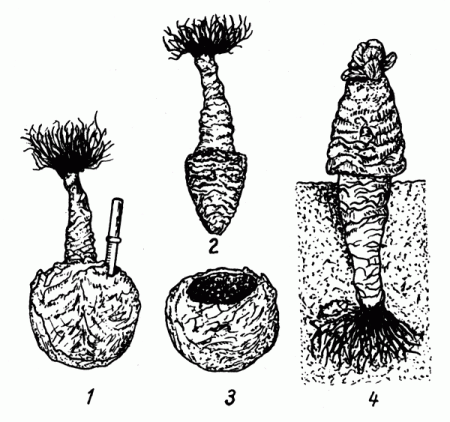 Cabbage gives seeds in the second year of vegetation. If the mother plants are planted correctly, they actively develop, turning into testes. Plants produce peduncles on which pods form at the end of summer. When planting queen cells, you must adhere to such recommendations:
Cabbage gives seeds in the second year of vegetation. If the mother plants are planted correctly, they actively develop, turning into testes. Plants produce peduncles on which pods form at the end of summer. When planting queen cells, you must adhere to such recommendations:
- Overwintered plants need to drop off earlyso that they have time to form an ovary before the heat of summer. At temperatures above + 25 ° C, pollen does not germinate, resulting in a large number of empty flowers. The optimum temperature of fruit setting is + 15 ... + 20 ° С. You can start planting queen cells already in April. Timing depends on climatic conditions. Plants tolerate light spring frosts well.
- The plot is prepared in the fall: the earth is dug up, manure or compost is introduced. On 1 m2 enough 4-6 kg of organics. In the spring on 1 m2 make 20 g of phosphorus and 10 g of potash fertilizers.
- Before planting, the roots of the queen cells are dipped in a mushy mixture of mullein and clay, prepared in a 1: 1 ratio.You can add Fitosporin-M to it. It will protect plants from fungal and bacterial diseases.
- When planting, the stump should be tilted, deepened into the ground to the base of the head. The mother liquors are planted according to the scheme of 70x50 cm. The soil around the plants is watered abundantly and slightly compacted.
- Cabbage is a cross-pollinated plant, so you do not need to plant other seed varieties near the seed. The optimum distance is at least 500 m.
Testis Care
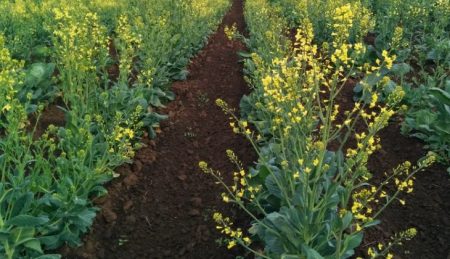 Caring for planted uterine plants includes the following activities:
Caring for planted uterine plants includes the following activities:
- At first, cabbage is shaded from bright sunlight. In cold weather, planting is covered with straw, which is removed after 7-10 days.
- The first time the mother liquors are fed after 2 weeks with a solution of mullein 1:10, pouring 3 liters under each plant. The second time they are fertilized before flowering, using nitrogen-containing mixtures at the rate of 15-20 g per 1 m2.
- Hills plants when peduncles appear.
- Arrows tie to high supports so that they do not break. You can make a trellis: every 3 testicles, stakes are installed, to which a rope is pulled on both sides of the row. This design prevents lodging peduncles.
- During the growing season, which lasts 90-130 days, old or diseased leaves are regularly torn off.
- To get full seeds, you need to remove excess peduncles. They only weaken the plants. High-quality seed can be obtained from the central arrows, so it is better to cut the side ones.
- Flowering lasts about 30 days. Then for 1-1.5 months the seeds ripen. Young shooters that have appeared are immediately removed so that the cabbage does not bloom a second time.
- The testes regularly weed, removing weeds. Water the plants sparingly.
Pest control
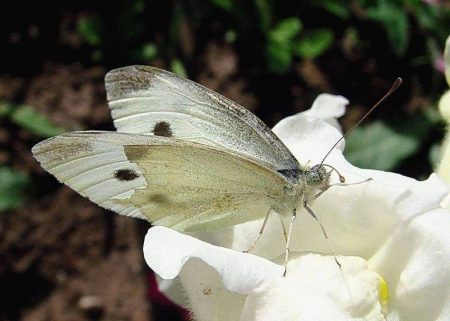 As soon as the mother liquors start to grow, pests begin to attack them:
As soon as the mother liquors start to grow, pests begin to attack them:
- turnip whitefish;
- cruciferous fleas;
- cabbage butterfly;
- weevil;
- a bear;
- grubs of larvae;
- cabbage moth.
Soil pests gnaw through the roots, causing the death of plants. To protect the mother liquors, each well is sprayed with a solution of Wofatox during planting. It is prepared in a proportion of 10 ml of the drug in 3 liters of water. The insects that settled on the cabbage suck the juice from the leaves. You can learn about the presence of pests by wilted and yellowed foliage. Such plants are treated with insecticides: Actellic, Decis, Actara or Angio. Plantings are sprayed twice with an interval of 14-20 days.
Picking cabbage seeds
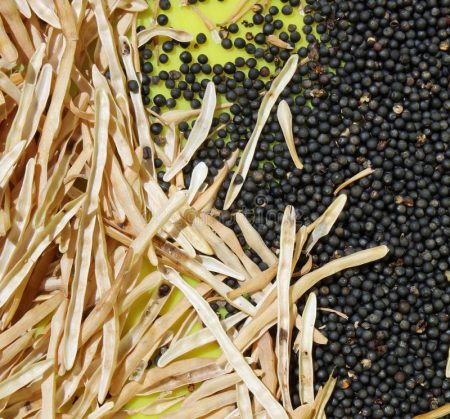 Cabbage seeds do not ripen at the same time. Pods are harvested selectively when they turn brown. If you miss the moment, then the very first and strongest seeds spill out onto the ground. Peduncles are cut off in dry weather, tied in sheaves and dried for 10-15 days. They are suspended in a warm, ventilated area. Do not overexpose the pods, as they may open up.
Cabbage seeds do not ripen at the same time. Pods are harvested selectively when they turn brown. If you miss the moment, then the very first and strongest seeds spill out onto the ground. Peduncles are cut off in dry weather, tied in sheaves and dried for 10-15 days. They are suspended in a warm, ventilated area. Do not overexpose the pods, as they may open up.
From one plant, on average, you can get 50 g of cabbage seeds. Ripened grains are light brown in color. To remove them, dried pods are threshed. The seeds examined from the husk are put in paper bags or fabric bags. A dry, cool place is suitable for their storage. Sowing material can be used for 3-5 years.
Cabbage seeds are easy to harvest on your own. It is enough to plant several mother plants on the plot to get a large number of pods. If you follow the rules of agricultural technology, you can grow high quality seed. It is pointless to plant F1 hybrids on seeds, since they do not retain varietal characteristics.

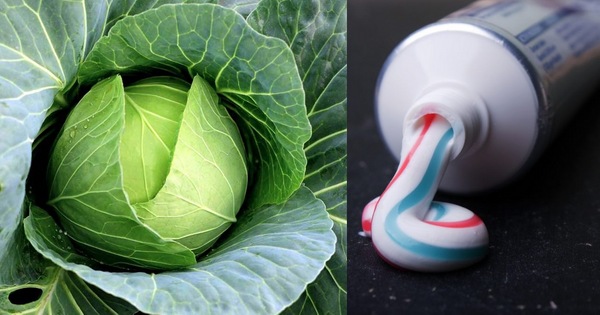
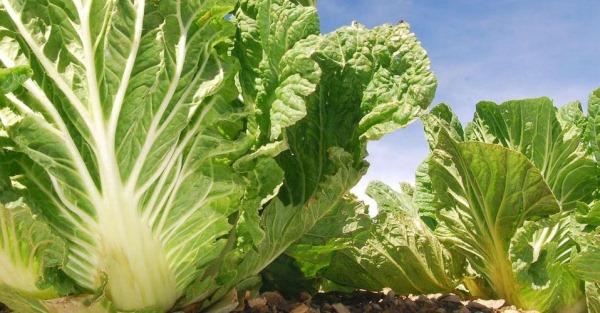
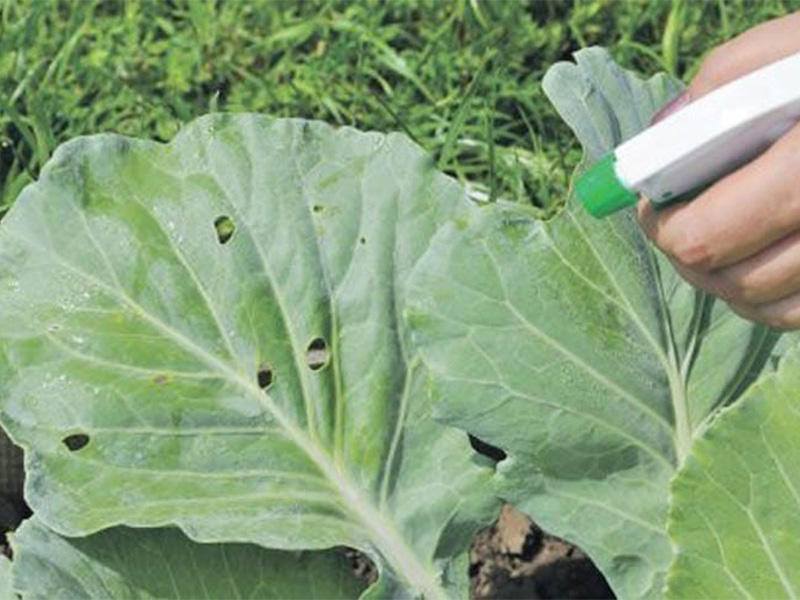
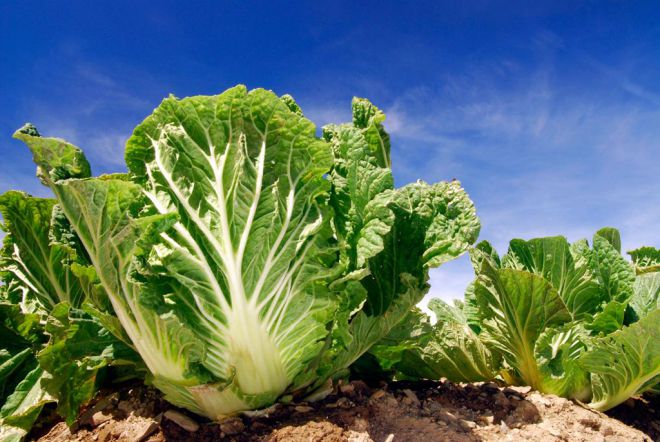 How to grow Chinese cabbage on your site?
How to grow Chinese cabbage on your site?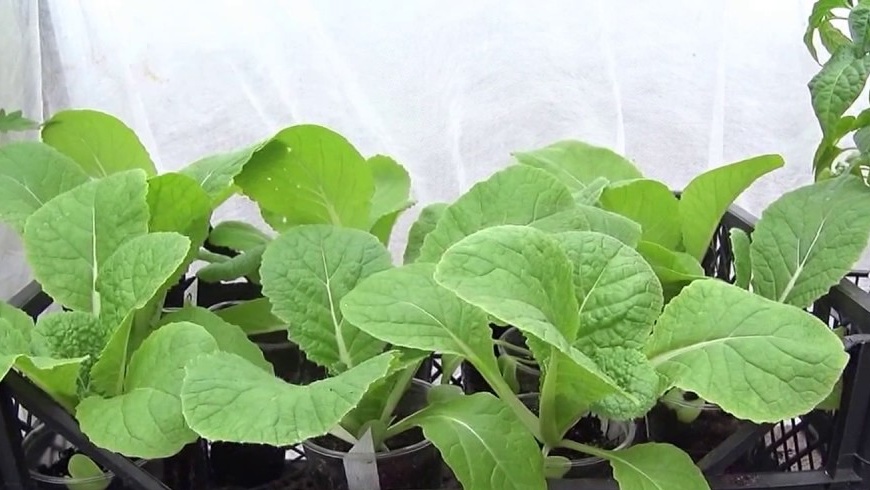 When to plant Chinese cabbage on seedlings in 2024
When to plant Chinese cabbage on seedlings in 2024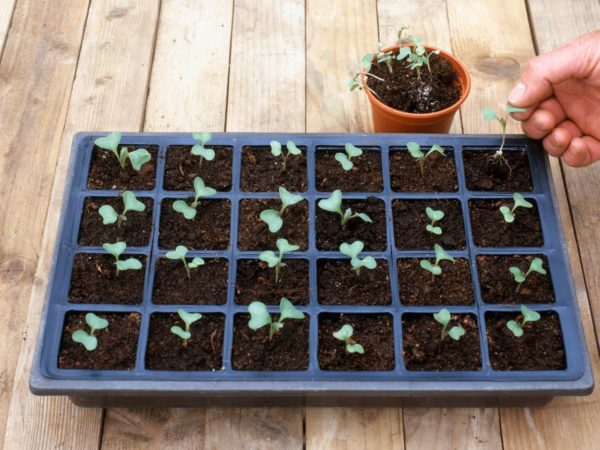 When to sow cabbage for seedlings in 2019 on the moon
When to sow cabbage for seedlings in 2019 on the moon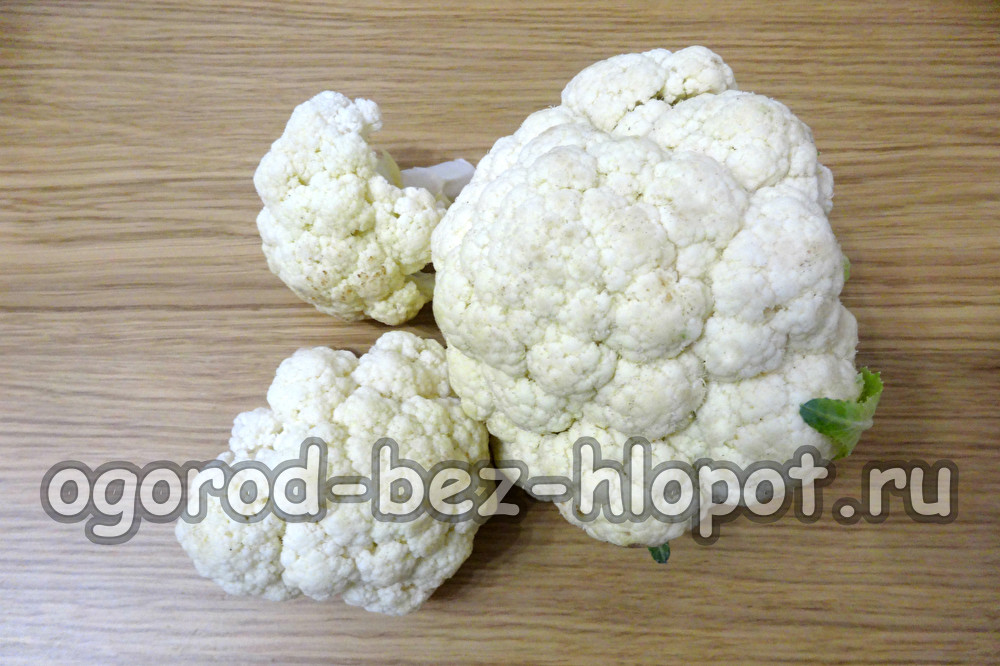 Cauliflower: how to grow large snow-white inflorescences
Cauliflower: how to grow large snow-white inflorescences